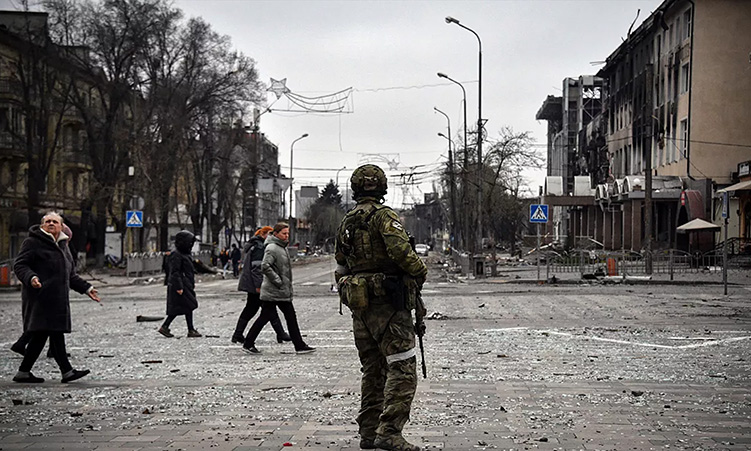GOVERNMENT’S land reform programme is so slow that it will take another 40 years before half of the commercial land is in the hands of landless black Namibians, according to a study by the Institute for Public Research Institute (IPPR).
In a new paper titled ‘Rethinking Land Reform in Namibia: Any Room for Economics?’, the research group said present Government land policies were leading to only about one per cent of commercial land being redistributed annually. “This leisurely pace of change means that the land question is unlikely to be resolved any time soon and will continue to hold back national economic development by aggravating racial tension and creating uncertainty,” the IPPR report said.Government recently announced plans to expropriate land for resettlement purposes.While welcoming efforts to speed up land reform, IPPR called on Government to set clear targets like the end-point and the intended speed.”Is 50 per cent of total commercial farmland sufficient within a generation or should it be 75 per cent within 10 years? What is a politically acceptable racial balance? Do black Namibians (or anyone else for that matter) really want to own what are after all often rather bleak and unproductive tracts of land?” the IPPR paper asked.It said speeding up land redistribution should not mean throwing existing policies out of the window or to create uncertainty.The IPPR said although expropriation had a role to play to accelerate land reform it can create uncertainty in the absence of clear criteria.”From an economic point of view, Government’s approach to date seemed sensible: to expropriate unproductive land in the hands of foreigners and absentee landlords.By widening the criteria to include just about anyone is clearly counter-productive,” it said.The IPPR compared the progress made through two main policies: the Affirmative Action Loan Scheme (AALS) and the National Resettlement Policy (NRP).The AALS was designed to assist larger better-of communal farmers while the NRP was more for the poor.It said the AALS had already led to more than three-and-a-half times land being redistributed than Government purchases for resettlement.Because the AALS was a faster and more effective way of redistributing land, the IPPR suggested that it be broadened and upgraded to allow smaller farms to also benefit.Anyone with more than 150 large stock or 800 small stock qualify for subsidised Agribank loans through AALS.Since 1996/97 Government has allocated N$20 million a year for the purchase of commercial land for resettlement purposes.The amount was stepped up to N$50 million last year.IPPR said it was “likely that the original allocation had failed to keep up with land price inflation”.By the end of last year, Government had bought or where donated an area of 829 486 hectares under the redistribution programme.Some N$121 million had gone into land purchase.On the other hand, a total area of more than 3,1 million hectares had been purchased under the AALS between 1992 and October 2003 through 528 loans.The estimated cost in subsidies was in the region of N$106 million.”This leisurely pace of change means that the land question is unlikely to be resolved any time soon and will continue to hold back national economic development by aggravating racial tension and creating uncertainty,” the IPPR report said.Government recently announced plans to expropriate land for resettlement purposes.While welcoming efforts to speed up land reform, IPPR called on Government to set clear targets like the end-point and the intended speed.”Is 50 per cent of total commercial farmland sufficient within a generation or should it be 75 per cent within 10 years? What is a politically acceptable racial balance? Do black Namibians (or anyone else for that matter) really want to own what are after all often rather bleak and unproductive tracts of land?” the IPPR paper asked.It said speeding up land redistribution should not mean throwing existing policies out of the window or to create uncertainty.The IPPR said although expropriation had a role to play to accelerate land reform it can create uncertainty in the absence of clear criteria.”From an economic point of view, Government’s approach to date seemed sensible: to expropriate unproductive land in the hands of foreigners and absentee landlords.By widening the criteria to include just about anyone is clearly counter-productive,” it said.The IPPR compared the progress made through two main policies: the Affirmative Action Loan Scheme (AALS) and the National Resettlement Policy (NRP).The AALS was designed to assist larger better-of communal farmers while the NRP was more for the poor.It said the AALS had already led to more than three-and-a-half times land being redistributed than Government purchases for resettlement.Because the AALS was a faster and more effective way of redistributing land, the IPPR suggested that it be broadened and upgraded to allow smaller farms to also benefit.Anyone with more than 150 large stock or 800 small stock qualify for subsidised Agribank loans through AALS.Since 1996/97 Government has allocated N$20 million a year for the purchase of commercial land for resettlement purposes.The amount was stepped up to N$50 million last year.IPPR said it was “likely that the original allocation had failed to keep up with land price inflation”.By the end of last year, Government had bought or where donated an area of 829 486 hectares under the redistribution programme.Some N$121 million had gone into land purchase.On the other hand, a total area of more than 3,1 million hectares had been purchased under the AALS between 1992 and October 2003 through 528 loans.The estimated cost in subsidies was in the region of N$106 million.
Stay informed with The Namibian – your source for credible journalism. Get in-depth reporting and opinions for
only N$85 a month. Invest in journalism, invest in democracy –
Subscribe Now!










